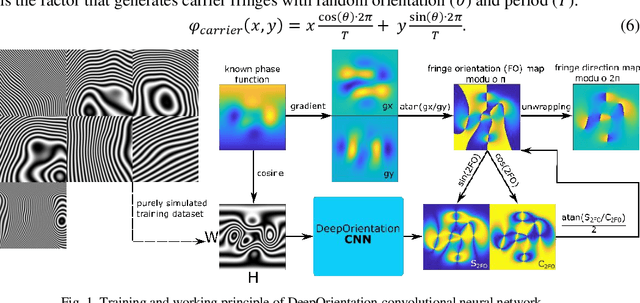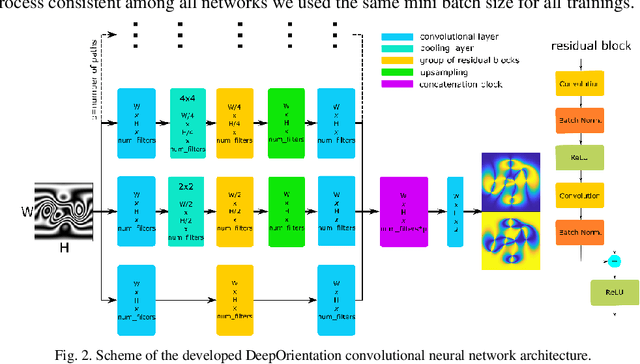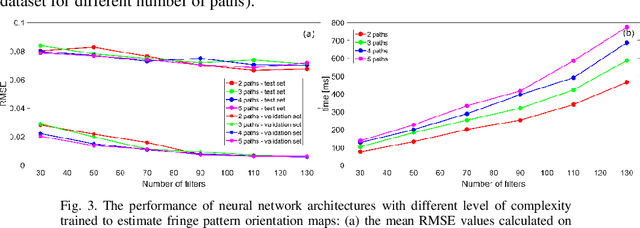Mikolaj Rogalski
DeepOrientation: convolutional neural network for fringe pattern orientation map estimation
Oct 23, 2023



Abstract:Fringe pattern based measurement techniques are the state-of-the-art in full-field optical metrology. They are crucial both in macroscale, e.g., fringe projection profilometry, and microscale, e.g., label-free quantitative phase microscopy. Accurate estimation of the local fringe orientation map can significantly facilitate the measurement process on various ways, e.g., fringe filtering (denoising), fringe pattern boundary padding, fringe skeletoning (contouring/following/tracking), local fringe spatial frequency (fringe period) estimation and fringe pattern phase demodulation. Considering all of that the accurate, robust and preferably automatic estimation of local fringe orientation map is of high importance. In this paper we propose novel numerical solution for local fringe orientation map estimation based on convolutional neural network and deep learning called DeepOrientation. Numerical simulations and experimental results corroborate the effectiveness of the proposed DeepOrientation comparing it with the representative of the classical approach to orientation estimation called combined plane fitting/gradient method. The example proving the effectiveness of DeepOrientation in fringe pattern analysis, which we present in this paper is the application of DeepOrientation for guiding the phase demodulation process in Hilbert spiral transform. In particular, living HeLa cells quantitative phase imaging outcomes verify the method as an important asset in label-free microscopy.
Single-shot experimental-numerical twin-image removal in lensless digital holographic microscopy
Aug 08, 2023Abstract:Lensless digital holographic microscopy (LDHM) offers very large field-of-view label-free imaging crucial, e.g., in high-throughput particle tracking and biomedical examination of cells and tissues. Compact layouts promote point-of-case and out-of-laboratory applications. The LDHM, based on the Gabor in-line holographic principle, is inherently spoiled by the twin-image effect, which complicates the quantitative analysis of reconstructed phase and amplitude maps. Popular family of solutions consists of numerical methods, which tend to minimize twin-image upon iterative process based on data redundancy. Additional hologram recordings are needed, and final results heavily depend on the algorithmic parameters, however. In this contribution we present a novel single-shot experimental-numerical twin-image removal technique for LDHM. It leverages two-source off-axis hologram recording deploying simple fiber splitter. Additionally, we introduce a novel phase retrieval numerical algorithm specifically tailored to the acquired holograms, that provides twin-image-free reconstruction without compromising the resolution. We quantitatively and qualitatively verify proposed method employing phase test target and cheek cells biosample. The results demonstrate that the proposed technique enables low-cost, out-of-laboratory LDHM imaging with enhanced precision, achieved through the elimination of twin-image errors. This advancement opens new avenues for more accurate technical and biomedical imaging applications using LDHM, particularly in scenarios where cost-effective and portable imaging solutions are desired.
 Add to Chrome
Add to Chrome Add to Firefox
Add to Firefox Add to Edge
Add to Edge